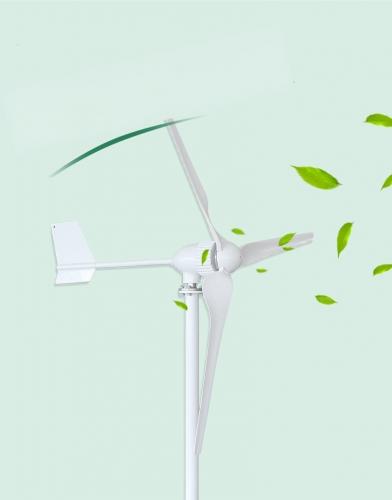What country uses the most wind energy?

Wind energy has become an essential component of the global transition towards sustainable and renewable energy sources. With the increasing awareness of environmental issues and the pressing need to reduce carbon emissions, many countries have embraced wind power as a viable solution. Among these, China stands out as the country that uses the most wind energy, leading the world in both installed capacity and generation. This article delves into the factors contributing to China's leadership in wind energy, the impact of this renewable resource on their energy landscape, and the broader implications for global energy policies.
China's Leadership in Wind Energy
China's commitment to developing wind energy is evident in its rapid expansion of installed capacity. As of the latest data, China has the largest installed wind power capacity globally, surpassing other major players such as the United States and Germany. This achievement is a result of several key factors, including government policies, technological advancements, and strategic investments.
- Government Initiatives and Policies
The Chinese government has played a pivotal role in promoting wind energy through a series of supportive policies and initiatives. The country's Five-Year Plans have consistently emphasized the importance of renewable energy, setting ambitious targets for wind power capacity. Incentives such as feed-in tariffs, tax benefits, and subsidies have encouraged both domestic and international investment in the sector.
Moreover, China's National Energy Administration (NEA) has streamlined the approval process for wind projects, reducing bureaucratic hurdles and accelerating development. This proactive approach has created a conducive environment for wind energy to flourish, attracting significant investments from both state-owned and private enterprises.
- Technological Advancements
China's wind energy sector has benefited from substantial technological advancements, enabling the deployment of more efficient and powerful wind turbines. Chinese companies have invested heavily in research and development, resulting in innovations that have lowered the cost of wind power generation. These advancements have not only enhanced the performance of wind turbines but also extended their lifespan, making wind energy a more attractive option for investors.
Additionally, China's focus on domestic manufacturing has bolstered its wind energy industry. By developing a robust supply chain for wind turbine components, China has reduced its reliance on imports and achieved economies of scale. This self-sufficiency has further driven down costs and increased the competitiveness of Chinese wind energy companies on the global stage.
- Strategic Investments
China's strategic investments in wind energy infrastructure have been instrumental in its rise as a global leader. The country has invested heavily in the construction of wind farms, particularly in regions with abundant wind resources such as Inner Mongolia, Xinjiang, and Gansu. These large-scale projects have significantly boosted China's wind power generation capacity.
Furthermore, China has prioritized the development of offshore wind farms, recognizing their potential to generate substantial amounts of clean energy. Offshore wind projects benefit from stronger and more consistent winds, leading to higher capacity factors compared to onshore installations. China's investment in offshore wind technology positions it as a frontrunner in this emerging sector.
Impact on China's Energy Landscape
The expansion of wind energy in China has had a profound impact on the country's energy landscape. It has diversified the energy mix, reducing dependence on fossil fuels and enhancing energy security. Wind power now accounts for a significant portion of China's electricity generation, contributing to the reduction of greenhouse gas emissions and air pollution.
- Diversification of Energy Sources
China's reliance on coal as a primary energy source has long been a concern due to its environmental impact. The growth of wind energy has provided an alternative that is both sustainable and environmentally friendly. By diversifying its energy sources, China has reduced its vulnerability to fluctuations in fossil fuel prices and supply disruptions.
- Reduction of Carbon Emissions
Wind energy plays a crucial role in China's efforts to combat climate change. As a clean and renewable resource, wind power generates electricity without producing carbon emissions. The increased adoption of wind energy has contributed to a decline in China's carbon intensity, aligning with the country's commitments under the Paris Agreement to reduce greenhouse gas emissions.
- Economic and Social Benefits
The development of wind energy has also brought about economic and social benefits for China. The industry has created numerous jobs in manufacturing, installation, and maintenance, contributing to economic growth in regions with wind farms. Additionally, the reduction in air pollution resulting from decreased coal consumption has improved public health and quality of life for many Chinese citizens.
Global Implications and Future Prospects
China's leadership in wind energy has significant implications for global energy policies and the future of renewable energy. As the world's largest emitter of greenhouse gases, China's transition to cleaner energy sources sets a powerful example for other countries striving to achieve their climate goals.
- Influence on Global Energy Policies
China's success in wind energy demonstrates the viability of large-scale renewable energy deployment, encouraging other nations to follow suit. The country's achievements highlight the importance of government support, technological innovation, and strategic investments in driving the growth of renewable energy. These lessons can inform global energy policies and inspire collaborative efforts to accelerate the transition to a low-carbon future.
- Opportunities for International Collaboration
China's expertise in wind energy presents opportunities for international collaboration in research, development, and deployment of wind technologies. By sharing knowledge and best practices, countries can work together to overcome common challenges and enhance the efficiency and effectiveness of wind power generation. Collaborative efforts can also facilitate the development of global standards and frameworks for wind energy, promoting its widespread adoption.
- Future Prospects for Wind Energy
Looking ahead, the prospects for wind energy in China and globally remain promising. As technology continues to advance, the cost of wind power is expected to decrease further, making it an increasingly attractive option for energy generation. China's ongoing investments in offshore wind projects and grid infrastructure will likely drive continued growth in the sector.
Moreover, the integration of wind energy with other renewable sources, such as solar power, and advancements in energy storage technologies will enhance the stability and reliability of renewable energy systems. These developments will play a crucial role in achieving a sustainable energy future.
In conclusion, China's leadership in wind energy exemplifies the transformative potential of renewable resources in addressing global energy challenges. Through strategic policies, technological advancements, and significant investments, China has positioned itself at the forefront of the wind energy sector. The country's achievements offer valuable insights and inspiration for the global community as it strives to transition to a cleaner, more sustainable energy future.

 Afrikaans
Afrikaans Čeština
Čeština Dansk
Dansk Deutsch
Deutsch Español
Español Francais
Francais Italiano
Italiano Magyar
Magyar Nederlands
Nederlands Norsk
Norsk Polski
Polski Português
Português Română
Română Slovák
Slovák Suomi
Suomi Svenska
Svenska Tiếng Việt
Tiếng Việt Türk dili
Türk dili Ελλάδα
Ελλάδα Русский
Русский اللغة العربية
اللغة العربية แบบไทย
แบบไทย 中文繁體
中文繁體 日本語
日本語 한국인
한국인







